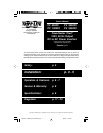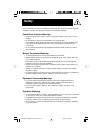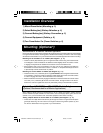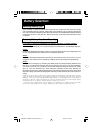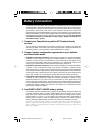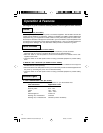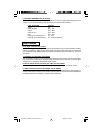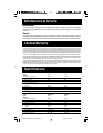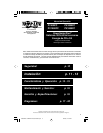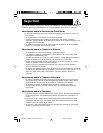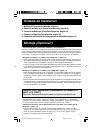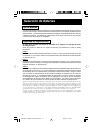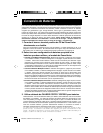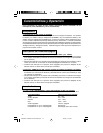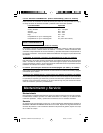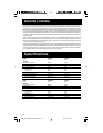
4
Battery Selection
Selecting Battery Type
Select a battery or system of batteries that will provide your PowerVerter with proper DC voltage
and an adequate amp hour capacity. Select ‘Deep-Cycle’ batteries to enjoy optimum performance
from your PowerVerter. Batteries of either Wet-Cell (vented) or Gel-Cell/Absorbed Glass Mat (sealed)
construction are ideal. 6 Volt “golf-cart,” Marine Deep-Cycle or 8D Deep-Cycle batteries are also
acceptable.
Selecting Battery Amp-Hour Capacity
If you plan to connect your batteries to a vehicle's alternator or another charging
current, Step 1:
Add the Wattage Ratings of your connected equipment to determine the Total Wattage Required.*
Step 2:
Divide the Total Wattage Required (from Step 1) by the PowerVerter's DC input voltage (either 12V
or 24V; see specifications) to determine the DC Amperes Required.
Step 3:
Multiply the DC Amperes Required (from Step 2) by the number of hours you will want to run your
equipment from battery power to determine a Battery Amp-Hours Required Rough Estimate.
Step 4:
Compensate for inefficiency by multipling your Battery Amp-Hour Required Rough Estimate (from
Step 3) by 1.2 to determine how many amp-hours of battery power (from one or several batteries)
you should connect to your PowerVerter. Note that the Amp-Hour ratings of batteries are usually
given for a 20 hour discharge rate. Actual Amp-Hour capacities are less when batteries are
discharged at faster rates: batteries discharged in 55 minutes provide only about 50% of their listed
Amp-Hour ratings, while batteries discharged in 9 minutes provide as little as 30% of their Amp-Hour
ratings.
Example: A park ranger wants to be able to power emergency lights off of 12V batteries for up to an hour after an AC power
outage. She divides the total wattage of her equipment (150 watts) by her PowerVerter's DC input voltage (12V) and
multiplies by 1 hour to get a Battery Amp-Hours Required Rough Estimate of 12.5. She multiplies this by 1.2 (for inefficiency)
then divides by 50% (since a battery that discharges in an hour only provides about 50% of its stated amp-hour capacity)
and determines that her 12V batteries' amp-hour capacities must add up to at least 30.
* The wattage rating is usually stated in a device's manual or on its nameplate. If your equipment is rated in amps rather
than watts, you can approximate its watt rating by multiplying its ampere rating by its input voltage (120).
200002001 CURRENT PV 500-2400FC.p65 6/22/00, 11:39 AM4



